November 5, 2025
Unraveling the spiral
Breaking the patterns that keep us stuck in a loop
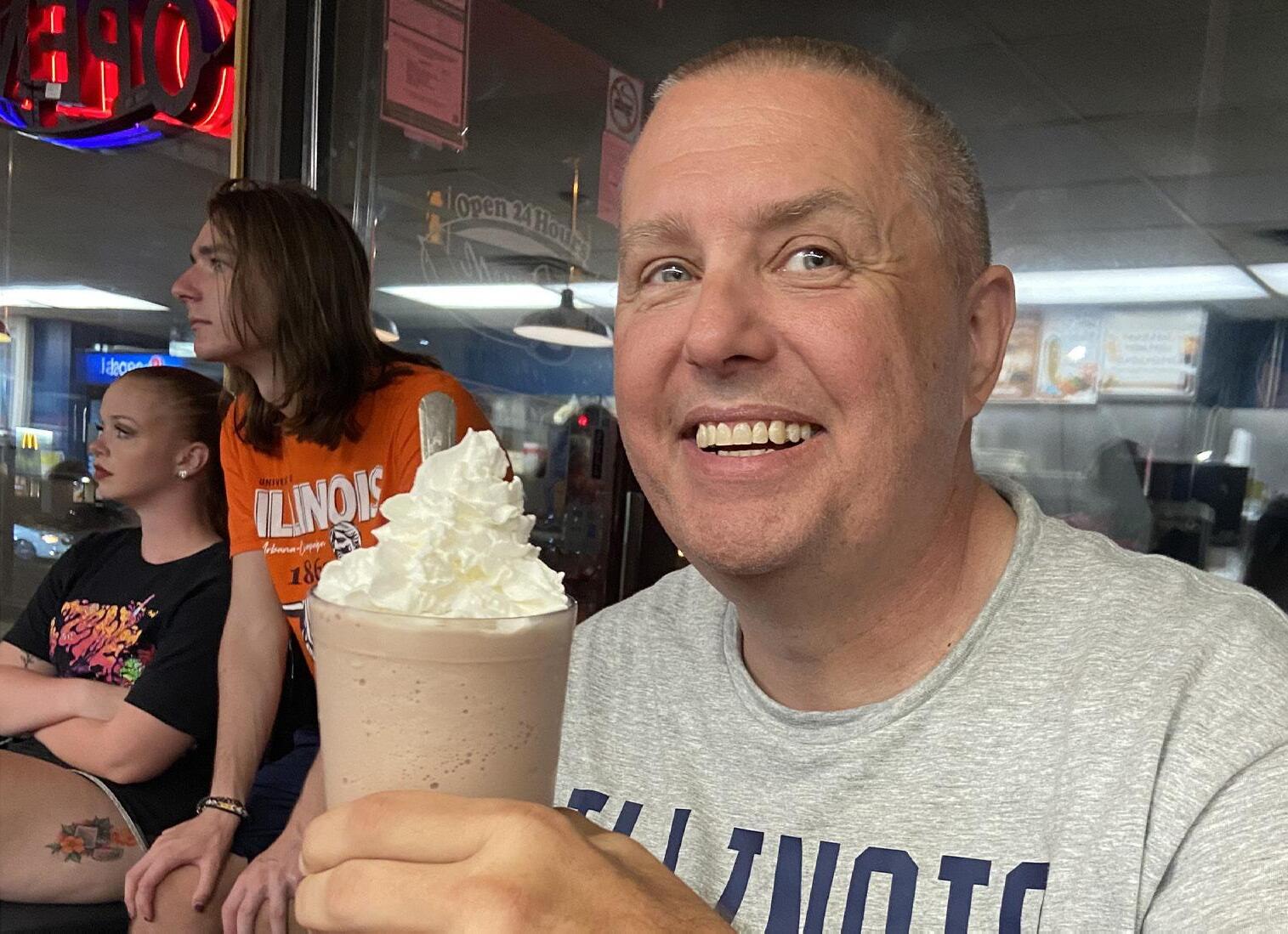


We live in a world where we are constantly asking ourselves what is real and what is fake. The world around us reinforces our false realities and pollutes our minds. Conspiracy is a rabbit hole that brings us to fantasy. Climbing out of that rabbit hole and escaping our delusions feels impossible, but impossibility is an illusion. We encourage everyone to break their pattern of obsession so they don’t lose who they are.






Remembering Mr. Larson
BY ALEENA ALRIFAEE Editor and Social Media Assistant
On Sunday, Sept. 28, the Kaneland community was informed of the unexpected passing of Kevin Larson, a dedicated special education teacher at Kaneland High School for nearly 20 years. Larson was a respected educator and coach to many Kaneland families, and his loss has been felt deeply across the district and community.
Larson loved many things, one of which was volleyball. He coached the sport for several years and loved attending Kaneland athletic events. He supported every team, club and activity, and he often wore Kaneland shirts representing different clubs or sports.
Social studies teacher Scott Parillo co-taught with Larson for six years, forming a strong friendship through their shared classroom. Parillo described Larson as kind, funny and always willing to help others.
“He would do anything for anybody,” Parillo said. “I mean, if a kid needed money, he would give them money. You know, so they could eat. We both did that. That was one thing we would always do.”
Sophomore Corrine Faivre developed a close relationship with Larson. He was a person she grew up with. Lar-

say, ’Be good this weekend, and stay out of trouble,’’’ Woods said.
Science teacher Joanna Edelman, who knew Larson for 16 years, described him as her closest guy friend. She remembers him as thoughtful, funny and someone who always checked in on others.

“He always thought about other people,” Edelman said. “He didn’t ever think about himself. He was always thinking about everybody else first. And that’s really who he was.”
Larson was the type of person to bend over backwards for anybody. It didn’t matter if you were a student, a friend or a family member.
“Students will miss seeing him in the hallways and miss having him in class,” Faivre said.
Edelman recalled one of her favorite memories of Larson, where during a conversation about the education sys -

son and her father had a great relationship prior to her even being born. She said that Larson felt like an uncle to her despite not being related.
“He definitely cared a lot about his students and his work,” Faivre said.
Larson coached senior Brynn Woods during her freshman year. She recalled how he continued to greet her in the hallways every day.
“Before I left school, he always said, ‘Have a good day,’ and on Fridays he’d

spending time with him.
On Friday, Sept. 26, Larson was at the University of Illinois in Urbana-Champaign (UIUC) to watch the Oregon Ducks face the Illinois Fighting Illini in volleyball. The following day, he enjoyed the Illinois vs. University of Southern California football game. Both Illinois teams won that weekend.
“Kevin loved UIUC,” Parillo said. “I wish he was still here, but I’m glad his last weekend was so memorable.”

tem around the world, he asked her if Poland, which is where Edelman is from, had FFA.

“I told him, ‘Kevin, why don’t you say it out loud again? Future Farmers of America,’” Edelman said, laughing. “‘No, we don’t have FFA in Poland.’”
Moments like those showed Larson’s affable and easygoing nature. He connected with everyone and could laugh at himself, which made people feel comfortable and helped them enjoy

Following Larson’s passing, Kaneland administration offered counseling and support for staff and students through the Employee Assistance Program. Administration activated their response team to provide immediate counsel ing support for people to use. On Thursday, Oct. 2, staff members wore black customized jerseys to honor him.
Larson’s funeral service took place on Sunday, Oct. 5, followed by his buri al. On Friday, Oct. 10, during halftime of Kaneland’s Homecoming football game, the community honored him. His family stood on the field as they received a framed jersey with his name and favorite number, 9. The frame was signed by Kaneland staff members.
Larson’s kindness, humor and dedication left a lasting impact, and his presence will be missed by many.
Spreading of Conspiracies
BY ALLY REILLEY & SAVANA SANCHEZ Editors and Columnist and Broadcaster
Politically driven conspiracy theories are spreading across the nation, fueled by social media, political rhetoric and widespread uncertainty, often emerging during global crises and shifting public opinions and even influencing voter behavior.
About a year ago, many conspiracy theories tied to the 2024 election circulated, including claims of fraud, manipulated ballots and hidden influence by opposing parties. These claims were amplified by social media, often on platforms like Facebook, TikTok and X.
Voter fraud conspiracy theories are one of the causes of widespread misinformation in the United States and continue to divide Americans on electoral fairness. These theories have intensified the political divide between parties and have made many voters question the democratic voting process.
Even President Donald Trump has instigated a debate surrounding voter fraud. On Nov. 5, two days after Election Day in 2020, Trump was quoted by the White House Archives implying democrats were dishonest about the integrity of the votes being counted, specifically in swing states.
process in America. After the election in 2024, many loyal liberal-leaning voters were suspicious about Elon Musk’s role and praise of Trump in the election.
“Within hours of President-elect Donald Trump’s projected victory in the 2024 election, conspiracy theories
mixed together, making the truth questionable at times.
“I usually get news from social media or TV,” junior Ava Zion said. “I never believe anything on TikTok. I feel like I’m able to tell when things aren’t real, especially with fake news and AI now.”

When people see news on social media, they often question the bias, intent and rhetoric. In recent years, though, there has been a trend in conspiracy theories formed by a distrust for the media and gov ernment officials. These theories have become a global and social phe nomenon.
“It’s a corrupt system,” Trump said then. “It makes people corrupt even if they aren’t by nature but they become corrupt; it’s too easy. They want to find out how many votes they need, and then they seem to be able to find them.”
However, the Republican party is
began to spread among those who opposed him,” CBS reporter David Becker said. “On the left, there were claims that ‘the math just didn’t add up,’ that 20 million ballots were ‘missing’ or that Elon Musk’s Starlink was uploading fake votes to help Trump.”
Such conspiracies have sparked public debate, intensified criticism of electoral institutions and raised concerns about trusting government officials. Many conspiracy theories are formed from complex interac tions between psychological and cultural narratives. However, these theories can influence integrity, trust, mental health and relation

With the evolution of social media, films, music and arti fi cial intelli gence, it can be hard to de cipher the truth in the news. With the amount of issues in the world, lies, opin ions and facts are all
“When you repeat a lie often and loudly, people start to ques tion their own thoughts and start to believe their lies,” English teacher Kristen Johnson said. “Then that leads them to vote based on their learned lies and not what they once knew to be true.”
Social media plays a major role in this process, but the platforms people use often depend on their generation. While most of the younger generations gravitate towards newer social media platforms such as TikTok or Instagram, many older gen erations look to platforms like



and Misinformation
uniquely in different generations. “I think we’re (Gen Z) definitely more aware considering we grew up with the internet and grew up with AI,” Zion said. “I feel like a lot of the time kids can tell [what is] AI versus adults because we’ve just seen so much of it
claimed, “This image of Trump was taken today. There is absolutely nothing wrong with his ear, and it has zero damage, FROM A BULLET. Everything about Trump is a con or a grift.”
In reality, the photo this post was referring to was one from two years pri
during the campaign and that part of that inquiry touched on the Trump campaign’s contacts with Russian figures.”
Although sources prove the theory false, Spygate continues to be brought up in political discussions and serves as a point of contention between the two major political parties. The theory itself contributed to the distrust of political figures and the FBI as a whole.

Regardless of which side pushes a conspiracy theory, they are impacting the overall integrity of our democracy. Conspiracy theories illustrate the ways misinformation spreads across generations and media platforms, shaping how people interpret political events and scandals.
At this point, the United States is very divided politically, making it hard to find common ground or see eye to eye with others from the opposite political party. Conspiracy theories are only fueling Americans’ distrust for the government and causing complex and confusing agendas to be popularized in society.
In 2025, 53% of adults say sometimesthey or often get their news from media.social - PewCenterResearch


BY OLIVIA COTTER & CHARLIZE LANDA


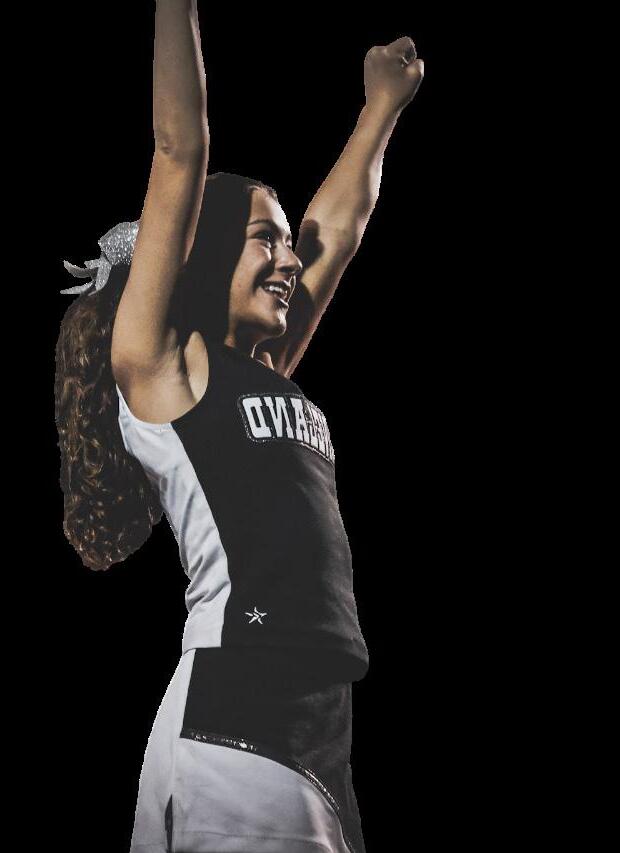
Manager
AFriday Knight Lights
lthough there may be a few moments of peace during a stressful week of school, nothing beats that sigh of relief when the bell rings at 2:50 on Friday.
Before a Friday night football game even kicks off, the cheer and dance teams and the marching band have been working hard to add to the atmosphere.
“We hype everyone up because we’re only in high school for four years,” junior and dance team member Brynn Humm said. “We might as well just have fun.”
While in-game performances may seem inconsequential to a game’s outcome, dancers and cheerleaders spend hours perfecting their routines.
“Students don’t realize the amount of practice cheer takes,” senior and varsity cheerleader Gabriella Monteleone said. “It takes a lot of physical work. You have to use a lot of muscles you don’t usually use along with making it look effortless.”
During halftime, the marching
JV VS. VARSITY Experiences
BY KATE HOMCO & GRACE BRUNSCHEEN Editors, Podcaster and Columnist
The jump from junior varsity (JV) to varsity marks more than a new jersey but a shift in intensity, responsibility and identity. JV offers a chance to learn and grow team chemistry, while varsity represents the highest level of competition, where the pressure runs as high as the pride.
For many athletes, the JV experience is all about building skills, confidence and chemistry with teammates. Coaches use JV as a space for players to grow both physically and mentally. As Andre Carriere, the boys lacrosse coach, said, “I’ve moved athletes from JV to varsity within a year or during the season, just from seeing their growth.”
In sports, confidence often comes from team victories or hitting personal bests. But when an athlete competes at the varsity level, they play in front of bigger crowds, against tougher competition and with higher expectations. Emma Gatz, a senior on the volleyball team, has experienced this herself.
“My confidence was a big thing because when I was on JV, I was one of the
youngest on the team and one of the captains and didn’t know how to get people to want to follow and listen to me,” Gatz said. “When I transferred to varsity, my confidence for my first two years was also tough. I was in my head way too much.”
Confidence isn’t the only difference; competition takes on a whole new meaning when athletes move up. Being on JV is primarily about developing the athlete and learning how to compete, with mistakes seen as a space to grow. Once on varsity, every match, meet or game carries more weight. The competition becomes considerably more difficult. The margin for mistakes shrinks.
Jake Buckley, a senior three-sport varsity athlete (football, basketball and track), has had much experience at both the JV and varsity levels.
“I feel the competition is really there, with varsity really going against the best on each team, and with JV, you’re going against the second string,” Buckley said. “It is fun to have that kind of competition, mainly because JV is used to show varsity coaches what you are capable of, and that is a really big advantage with playing JV games.”
band, the cheerleaders and the dance team perform routines with choreography that they have been practicing. After an action-packed first half, the band hopes to keep the energy flowing.
“When we march out to the field and have some of our traditions that we do to help make the gameday atmosphere better for everyone, I think it is an important part of it,” assistant band director Brock Feece said.
While the football game and its players are the most important part of the game itself, the cheerleaders, dancers and band members deserve recognition too.
“No one knows the amount of sweat, effort and tears that go into a routine,” Monteleone said.
As students on the sidelines work hard to support the team and hype up the crowd, the student section isn’t always giving that energy back.
“I would love to improve the gameday atmosphere here,” Feece said. “I’d like to work together to make it more exciting for fans and for players.”


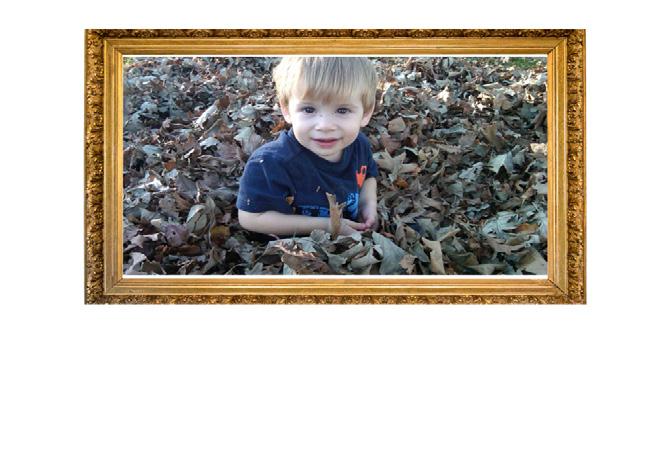

A LOVE FOR
BY BOBBY LEAVEY
Co-Sports & Activities Executive and Broadcast Manager
Casey Crosby, easily the highest touted prospect to come out of Kaneland High School, was the top ranked prospect in the state of Illinois for the class of 2007. The 26th nationally ranked baseball prospect turned in an impressive senior season with a 0.88 earned run average (ERA), 92 strikeouts and a 6-2 record in 63 2/3 innings of work (as reported by Shaw Local). Crosby was then named the Daily Chronicle’s Male Prep Athlete of the Year. These days, Crosby is back to pitching professionally for the first time in five years. It has been quite a journey for Crosby, and Kaneland has always played a role in it.
Crosby’s senior season got off to a very unexpected start, as his coach for the first three seasons in high school, Kip Rogers, stepped down from the head coaching role in January of 2007, two months before the start of the season. Current head baseball coach and 2011 State champion Brian Aversa was tasked with managing the attention that came with having a legitimate Major League Baseball (MLB) prospect as the team’s ace.
“The biggest thing about Casey was he made the season not about himself, but about the team,” Aversa said. “That showed a lot of maturity on his part. When I got the job, I met with him and his mom, and he talked about the season and some of his goals, and he reassured me that it wasn’t even about him.”
THE GAME
the right eyes on me and get thoroughly scouted so that I could get drafted. Coming in as a rookie head coach, it was pretty incredible.”
The hard work from both coach and player paid off, as Crobsy was drafted in the fifth round of the 2007 MLB draft by the Detroit Tigers.
“It was quite a roller coaster of emotions that day,” Crosby said. “I was predicted to go in the second round or so, but after the second round ended, then the third and fourth rounds ended.
three starts would be the only action of his MLB career.
Crosby then bounced around organizations in the MLB, the American Association of Professional Baseball (AAPB) and the Atlantic League of Professional Baseball (ALPB) until he stepped away from the game in 2020 after MLB canceled their minor league season due to COVID-19. Crosby was in the Los Angeles Dodgers organization at the time.
But his story didn’t stop there. Crosby is now pitching for the Kane County Cougars of the AAPB after five years of not pitching professionally at all.

Those talks Aversa had with Crosby translated into practices and games.
“The team would be having batting practice, and he’d be diving for balls in the outfield,” Aversa said. “I would have to tell him, ‘Hey, you can’t get hurt doing stuff like this. It’s practice.’ But he knew one speed, and he didn’t know how to turn it off. And that’s what made him so good. He just did everything 100% all the time. Those qualities aren’t something you coach or teach. He was born that way and raised that way.”
Aversa’s work did not go unnoticed, as Crosby praises how he set him up to succeed.
“He was able to coordinate with the scouts, and he did an incredible job doing that,” Crosby said. “I was able to get



You’re bummed. But then you’re drafted with one of the last picks of the day, and it went from total Debbie Downer to total joy and excitement. I even got thrown in the pool.”
Crosby decided to forgo his commitment to the University of Illinois and headed straight for the Tigers minor league system. But Crosby would have to wait a whole year to get his career started, as he underwent Tommy John surgery and didn’t pitch in 2008.
Crosby gradually climbed the ranks of the Detroit farm system, finally making his MLB debut in June of 2012. Crosby started three games and went 1-1 with a 9.49 ERA in 12.1 innings, according to Baseball Reference. These
“Taking those five years off, I kind of said goodbye to the game, knowing I wasn’t going to come back to it,” Crosby said. “This time coming back, I was able to kind of just have more fun, treat it more like a hobby. I still love baseball. I still love playing it. I mean, I’m still able to do it at a high level and I can make it work with life, then why not do it?”
Crosby did indeed pitch at a high level, having the fourth most appearances out of the Cougars bullpen with 41 innings pitched, 55 strikeouts, a 3.03 ERA and three saves while throwing up to 97 MPH at age 37. Crosby had a perfect 0.00 ERA in the playoffs and was a key contributor to the Cougars winning back-toback league championships. With that being the latest chapter in Crosby’s baseball career, what lies ahead is still uncertain.
“I’m just going to take everything as it comes,” Crosby said. “I’m not really setting any goals. I love baseball, and I can still do it. Whatever it leads to, I’m ready for it.”
What is clear is that Crosby loves competing at a high level, just like he loves the Kaneland community.
“Me and my wife got married in our early 20’s and never left Elburn,” Crosby said. “We both went to Kaneland, and both our families are here. Having a home base, you know, it’s awesome. You’re traveling around as a baseball player so much, just to have a home and come back to it is really important. Not only is your home the place where you live, but it’s the people that you’re around.”
Too COOL for SCHOOL
BY ELLIE OLP Editor and Podcaster
There was a time when pep rallies and assemblies would roar with the voices of students. The audience for games and performances would be full of people cheering with school spirit. Today, the same events often come with silence and vacant seats. Clubs and organizations generally lack student involvement, and enthusiasm has been replaced with nonchalance.
What exactly inspired this trend of apathy? A number of things could have contributed to this, including things like shifting social standards, fear of judgement, increased academic pressure or even evolving school culture.
One of the more prevalent causes of apathy are social standards and the stigmas they create. In high school, these standards can separate students into certain groups, and showing enthusiasm can be looked down upon by individuals based on what they think is acceptable.
John Thill, a junior who has participated in theater, choir, band and athletics, has experienced this stigma firsthand and noticed that support heavily depends on whom you’re surrounded by.
“People who are a part of the same things as me are more supportive and accepting, but kids who aren’t kind of see it as a nerdier or weirder thing,” Thill said. “When people on my athletic team see that I am involved with performing groups, they don’t really expect it.”
This sort of stigma can prevent people from joining these groups, or if they do join, to not be as proud or enthusiastic about it because of the criticism they might face. In high school, students are
Instead of letting judgement or stigmas influence him, Thill believes that the benefits from involvement outweigh the risk of criticism and help students find good people to surround themselves with.
“You’re going to meet people who will judge you,” Thill said. “You’re also going to meet people who are going to inspire you and support you in those groups, though, so you might as well give it a shot anyway.”
Finding people similar to you to surround yourself with is only one of the many benefits of showing spirit and putting yourself out there in high school.
“I’ve definitely gained a lot of connections,” senior Brooklyn Brown said. “Especially with teachers and staff, knowing I can rely on them has really helped me. I’ve also gotten a lot of stuff for college, like a scholarship through the school from being involved in all of these groups.”
Brown is a part of many groups that Kaneland has to offer. She is the president of Key Club and Class Officers and a member of DECA, Student Council, National Honor Society, the dance team and the track team.
“I stay motivated in these groups by always looking at the end goal, and just seeing what I am working towards and how I’m going to achieve it,” Brown said.
Participation doesn’t always have to mean working towards an end goal, though. For students like Thill, the memories, friendships and skills are what make it worthwhile.
“I like the confidence these groups have brought me and the person they’ve helped me become,” Thill said. “Without them, I would still be in my shell and I wouldn’t have made all the lifelong
ment isn’t just recognized by students. Teachers also emphasize that expressing enthusiasm in school can have benefits on both academics and the overall high school experience.
“I think being involved is one of the most important things for students,” English teacher, yearbook adviser and assistant varsity girls basketball coach Michael Cimino said. “Certainly academics are the top priority, but to me, they mostly go hand in hand. If you get involved in things that you care about or have a passion for, it’ll encourage you to work harder in school and to enjoy your time in the building more.”
Cimino was the Student Council sponsor for three years and has been a part of several other things, like assemblies and chaperoning school dances. He bases his perspective on school involvement on his own high school years.
“I remember, in my school, my friends and I were very involved in the culture, and we liked being a part of that,” Cimino said. “It felt like a leadership opportunity for us, even as younger kids, to show our faces and be a part of things.”
Though it is still like this for some students today, the majority of the student body has not contributed as much to the school culture as students used to.


“I think pep rallies and assemblies are very important for building school culture,” Cimino said. “I would like to see a lot more of those, since we only have two for the whole year. I feel like having more would just get kids more acclimated to being with each other and celebrating the accomplishments of students in music, sports and



Tracking your health progress
BY EVAN WHILDIN Co-Sports & Activities Executive and Broadcast Manager
As technology has continued to advance, people have developed a tendency to use it to track their health. Whether it’s counting steps and calories or tracking weight, heart rate or countless other metrics, monitoring your health can be an amazing habit to have.
Most people monitor their health with a goal in mind, whether they want to lose weight, get in better shape or just generally stay healthy. One group in particular that often utilizes health met rics is athletes, who use them to track their fitness in various ways.
Sophomore Carson Kaiser is a cross country and track athlete at Kaneland, and he has already claimed an All-State title in his freshman year. Kaiser, like many long-distance runners, uses various health metrics to track his fitness.
“I believe that if you want to go on a journey of becoming more healthy, then tracking metrics like diet, sleep and more are very important,” Kaiser said. “With fitter peo ple, like athletes, I’d say it’s just as important, but many people tend to over look many basic aspects of health and hyperfocus on very small things.”
Athletes in particular have a tendency to overanalyze metrics like heart rate rather than paying attention to how
28 calories

iors, like unhealthy eating behaviors or overexercising,” physical education teacher Thomas Fedderly said. “That is why I recommend talking with your doctor about it and having an annual physical and blood work done.”
If done properly, however, tracking your health can be incredibly beneficial. Many people see benefits in being able to set health goals using quantitative
52 calories
per 100 grams per 100 grams
In many cases, tracking calories and steps are the main metrics that people tend to focus on. Another commonly used metric is weight, and while there is a stigma around tracking weight, it is a key component to maintaining good health. Different data points, like weight, body mass index and body fat percentage, allow people to track their progress.


their body feels. If paired with listening to your body, these metrics can be very useful, but on their own they can be misleading.
Outside of athletics, common uses of data related to health involve tracking calories burnt and consumed, weight and more. These numbers are very useful, especially if there is a goal in mind, like a certain weight or daily caloric intake. However, if these are overanalyzed, it can be harmful to the individual.
“It could lead to obsessive behav -
Brunscheen
ment by doing that. Being able to compare benchmarks of previous health to where you currently are is a great way to allow for healthy growth. While many of these metrics have some margin for error from person to person, they are useful when compared with one another.
“I use a smart scale,” Fedderly said. “I’m not sure how accurate the numbers are, but it lets me know if I am improving. I use fitness and diet apps to keep track of nutrition and fitness act ivity. They help me be consistent with my daily exercise and diet.”
“Researchers tracked 1,042 adults over a year and found that people who weighed themselves once a week or less did not lose weight,” according to an article from the American Heart Association. “While people who weighed themselves six or seven times a week averaged a 1.7 percent weight loss.”
While being obsessive over weight is unhealthy, weight is something that should be acknowledged. It allows for something measurable by which you can track your progress. While weight doesn’t indicate everything about your health, it is a great point for comparison. On top of weight, tracking blood pressure and resting heart rate are also great
“People will get so obsessive over tracking health that any small change will drastically throw them off,” Kaiser said. “Sometimes, it’ll become so unhealthy that they will be more focused on stats than their actual health.”
One of the best indicators of health is how your body feels. While statistics are an extremely useful tool, they don’t indicate health perfectly. It’s important not to become overly concerned with specific statistics regarding your body. A good course of action is communicating concerns with a doctor or a physician, as this allows for professional advice on how to handle health.

by
Sarah Syed: One glorious queen to rule them all
BY OLIVIA COTTER & OLLIE FAIR Co-Copy Editor and Production Executive and Editor
You haven’t lived until you’ve been dubbed a glorious king or queen by Sarah Syed. Whether she’s yelled it at you in a busy hallway, congratulated you after a good test grade or cheered you up after a bad day, being inducted into her group of glorious kings and queens is among the highest honors.
Syed, a senior, moved here from Dallas, TX, right before her junior year of high school. Although Syed has lived all over the world - Pakistan, Morocco, India, Egypt, Australia, Saudi Arabia and the United States - this move was not easy for her.
“I was scared that I was going to be all alone and not make any friends,” Syed said. “I was actually petrified.”
Not only is re-establishing yourself in a new state challenging, but moving to an area with a drastically different culture is even harder.
“People in Texas are a lot nicer than people here,” Syed said. “I feel safer stopping at a random house in Texas and asking to use their phone than I do over here, because people here are kind of judgy and mean.”
Along with personality differences, Dallas is a lot more ethnically and culturally diverse compared to Elburn or Sugar Grove.
“My old history teacher joked that you’d hear 15 different languages as you walked down the hallway,” Syed said. “But over here, I’m scared to speak my language because I don't know some of these kids.”
Syed felt scared to fully express herself and her culture in her new environment. As a Pakistani Muslim, she stood out in the predominantly white and Christian town of Sugar Grove. And, with anti-immigration sentiments gaining popularity, Syed was cautious about sharing her cultural identity.
“Somebody told me to go back to my country,” Syed said. “And somebody else was very loudly talking about how much they hate immigrants in my neighborhood. I was born in Pennsylvania, but my mother was born in Dubai, so it just hits close to home.”
Initially, Syed found it challenging to make friends. She bounced around from group to group, not finding anything meaningful.
“I struggled to find my group,” Syed
said. “It felt like everyone had their own cliques, and I couldn’t look past opposing political views because those are your morals.”
After a few months, Syed stopped trying to conform to others' standards and fully embraced her unique, vibrant personality.
“I literally thought that she was going to be one of those students who was super quiet, because she seems like she has a quiet appearance to her,” science teacher Jason Foster said. “But then when she gets out of her shell, it’s like nope, not at all.”
Whether you’re friends with her or not, you’ve probably heard one of her bizarre nicknames, outlandish stories or amusing jokes. Wherever Sarah goes,
“She's
a joy to have in class. She brings a brightness to every single class period when she comes in."
- science teacher Jason Foster
laughter and entertainment follows.
“Last year during lunch, there was one time that she had a full 30-minute argument with somebody else at our table about how LeBron James is not a good basketball player, and that was an experience to witness,” junior Sam Vanatta said.
Although her personality is infectious, that isn’t the only asset she brings to the table. Syed cares deeply about her friends and is often their biggest cheerleader.
“I would consider [her] one of my closest friends,” Vanatta said. “She shares a lot of her personal life with me, which I take as a sign of trusting, and of course I share a lot of my personal life with her. She’s one of the funniest people I know. She’s super kind and supportive, and I think that everybody deserves a friend like Sarah.”
Even if she isn’t surrounded by friends, Syed still creates a comfortable and upbeat environment for everyone.
“I wish I had her again,” Foster said. “I honestly do. She’s a joy to have in class. She brings a brightness to every single class period when she comes in.”
Between being the vice president of Drama Club, Student Council and DECA and the president of the Environmental Impact Club, Syed is fully entrenched in
our school’s community. While having a packed schedule may be overwhelming to some, Syed enjoys getting involved in new clubs and activities.
Syed brings a positive attitude and determination to every activity she participates in. She could be running on a few hours of sleep or going through something in her personal life, but you wouldn’t know it. She’ll stop at nothing to bring the mood up and make sure everyone is having a good time.
“When we’re trying to come up with things, or if the environment's a little tense, she’s just always there to crack a joke and make sure the energy is up,” senior and co-vice president of Student Council Adriana Warrington said. “If someone's going to be there and say we got this, it’s always Sarah.”
Although she’s involved in plenty of extracurriculars, Syed loves one more than the rest. She co-founded and is co-president of Kaneland’s Environmental Impact Club. Through the club, she raises awareness about environmental issues and encourages her peers to be more environmentally conscious. Along with other club members, she helped plant a tree on our school’s grounds to celebrate Earth Day and commemorate the creation of the club.
“[Environmental Impact Club] is my favorite extracurricular because I care deeply about the environment, and I get creative control over how to best run the club and make our school more environmentally friendly,” Syed said.
Despite only being at Kaneland for two years, Syed has left a lasting mark on the community. She uplifts people with endearing nicknames and thoughtful compliments. Even if she just met you, Syed will make you feel as if you have been friends for years.

“When I moved here, I expected to make temporary and surface-level friendships, but now, I look forward to keeping in touch and maintaining relationships I made at Kaneland,” Syed said.
T he outcomes of obsession
BY PREMA WEICHUN Editor and Social Media Assistant
Obsession can be expressed in many different ways. It could involve changing yourself to be similar to someone else or avoid ing your social life to focus on school. Or it can mean dedicating your life to a sport, but it can also be represent ed by being overly concerned about people’s opinion of you. Regardless of the seemingly infinite obses sions someone may have, they all have their individual conse quences.
High school can be an extremely stressful time because of the variety of challenges presented to students. Most students want to fit in, and an attempt to assimilate can lead to an obsession. Others only focus on their sports or ac tivities. Oftentimes, students may not be aware of their obsessions and the possi ble consequences unit it’s too late.
Junior Alayna Knazur has been fo cusing on good grades for as long as she can remember, often feeling con sumed by the pressure.

“I study a lot and put a lot of time into school,” Knazur said. “Sometimes I don’t have enough time for myself because of how dedicated I am.”
School can feel overwhelming at times because of all the different social, extracurricular and academic
“It taught me a lesson that I
need to not think about the negative things in my life and think about the good things.”
-sophomore Lilly Crawford
pressures. Many students feel the need to be perfect, even when it is unachievable. Prioritizing one responsibility over every other activity can negatively affect other aspects of life. Discovering a healthy balance is essential to prevent people from falling down rabbit holes. Grades can feel especially challenging in high school when there are other stressors as well. Controlling your doubts can be hard, but there are strategies to stay level-headed.
tool when trying to not overwork yourself. However, it can be harder for students to find balance when they have multiple extracurriculars. Each one has its individual challenges that not everyone may know how to handle.

Senior Jacob Whittington has been a part of both the competitive and school marching bands for the past four years. Although band is a huge part of his life, he has also learned how to maintain a healthy balance between band and his personal life.
“I try to make sure that I get an equal amount done,” Whittington said. “I do my best to stay on top of things while also making time for practicing music.”
Knazur and Whittington have both developed the ability to avoid falling down rabbit holes, but balancing their activities and personal lives has not always been easy for them. Last year, Whittington was auditioning for a competitive summer marching band. It was on the professional level, and it intimidated him. He quickly fell into the dilemma of worrying about auditions and whether or not he would qualify for the group.

“I kind of just started going crazy,” Whittington said. “I had a lot of stuff on my plate…I had rehearsals every weekend and was getting ready for a different audition. I was super stressed all the time, and it just wasn’t great.”
For Whittington, when something goes wrong, an obstacle can bring additional stressors to his life. To prevent himself from falling into this negative mindset, he has found ways to have a healthy passion for band. He makes sure to have all of his homework done and eliminate any possible stressors so he is able to focus on what is important to him.
Although obsessions can have consequences, there is still a reason that people are invested in their passions. Different lessons can be acquired through the development of different skills, making it important to find a healthy balance.
Sophomore Lilly Crawford has been playing softball and basketball since she was five. Throughout her life, she has
learned many lessons from her sports. Crawford’s dedication to athletics allows her to apply the same skills she has acquired from softball and basketball to anything else she may do.
“It shows me that I can work through challenges in school and life,” Crawford said. “It helps me realize that I can do hard things.”
Crawford plays sports in both school and club seasons, and she even made the varsity softball team her first year of high school. She has accomplished diffi cult things that her dedication and pas sion towards sports have given her the confidence to do. Overcoming these obstacles has helped her in social and school life; she feels she can over come any challenge.
Although Crawford has learned to find a healthy balance, it took years of hard work to do so. She has been juggling school, friendships and year-round sports for years; it can be hard to not feel overwhelmed. Much like any other stressors, Crawford eventually found a way to balance different aspects of her life.
Two years ago, Crawford played at nationals for softball. She was not per forming to her standards, and nationals presented an extremely stressful event for her to go through.
Violett has watched from beginning to end the consequences of obsession, which has shaped her perspective.
“I see a lot of kids who are hyper fixated, especially with grades,” Violett

bility after responsibility can begin to feel like a never-ending cycle of tasks. Taking a break can help people realize that nothing is the end of the world.
“Your mental health is important, and you can say no to things,” Violett said. “If you fall down this rabbit hole of being hyperfixated, you won’t really en -

“The feeling that I wasn’t the best really drained my mental battery,” Craw ford said. “It taught me a lesson that I need to not think about the negative things in my life and think about the good things.”
Her experiences with stressful situations and not feeling confident have prepared her for any chal lenge in life. She has learned how to reassure herself, as well as not feel overwhelmed by one life factor or another. Even though her sports can be stressful, Crawford has learned valuable lessons and different ways to maintain a healthy amount of passion.
Every day, guidance counselors at the school see what students are go ing through and watch the outcome of various situations. They have a lot of perspective when it comes to what students experience, as they have wit nessed many unique people in so many different situations.
Cynthia Violett is a counselor for stu dents with the last names Se-Z in each grade level. She helps motivate stu dents to pass their classes and guides them when they choose their courses, and she tries to be there for everyone.
Page design by
Ally Reilley
Focusing too intensely on one thing can lead people to disregard other responsibilities. Everyone deals with obstacles differently, but no matter the circumstances, there are usually consequences.
Having an unhealthy balance can lead to overexertion and burnout; prioritizing well-being is the key to succeeding.
Having an overwhelming amount of passion for any one thing can feel like drowning. Acknowledging potential obsessions is imperative to anyone’s overall health.
There are many different lessons that a passion can teach someone, but there can be negative consequences of having an obsession with something. Keeping a stable mentality and trying to find a healthy balance can whelp everyone with their different interests.
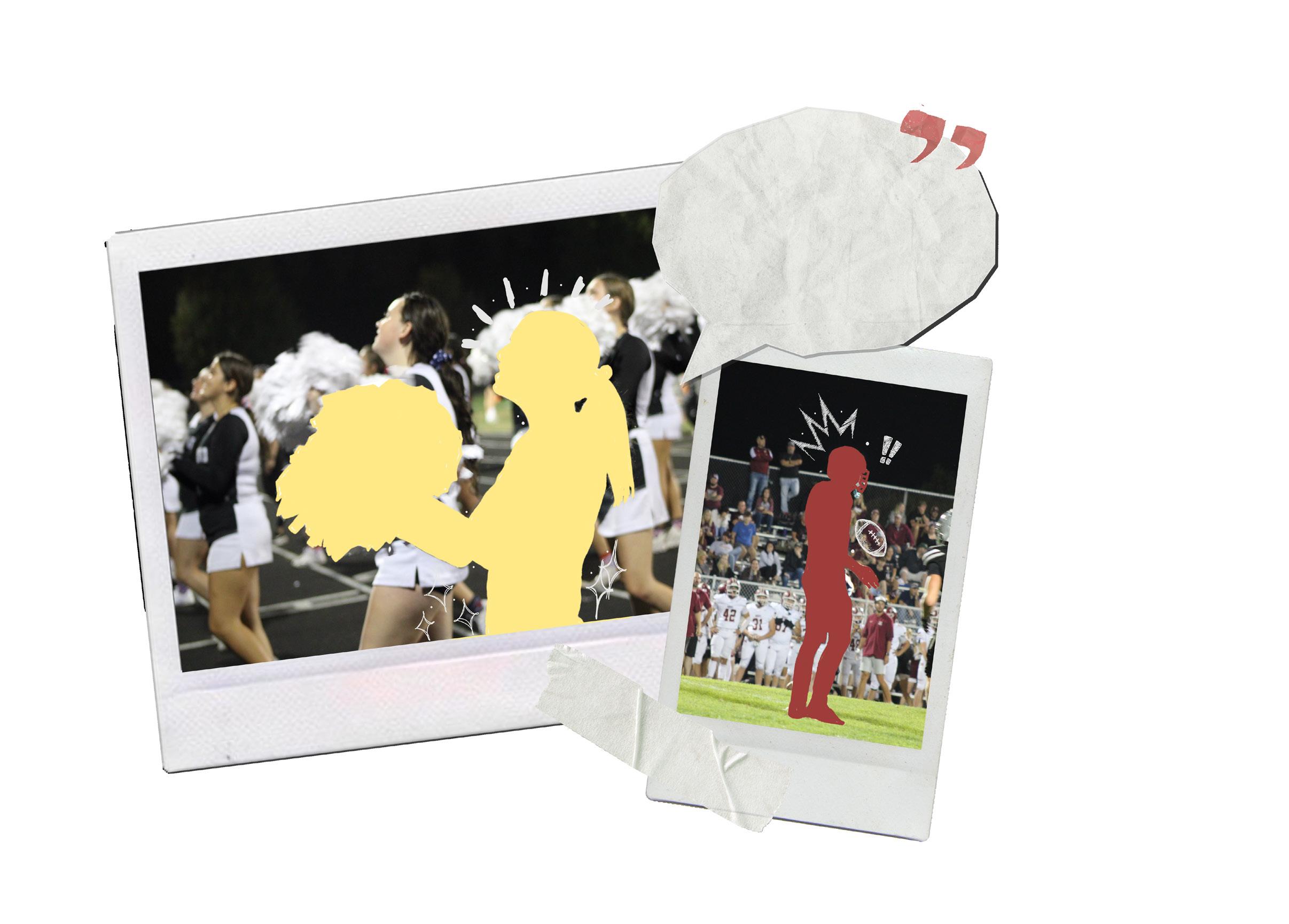
“Your mental health is important, and you can say no to things. If you fall down this rabbit hole of being hyperfixated, you won’t really enjoy things.”
-guidance Counselor Cynthia Violett
Accepting exclusion A guide to managing FOMO in adolescence
BY FAITH MASCHMAN Review Manager
FOMO, or the fear of missing out, is something that everyone has felt at some point. Whether your friends made plans without you or you overheard a conversation but were denied the details, it is a feeling all humans are familiar with. FOMO can guide your emotions, how you act in relationships and how you perceive yourself. Dealing with this fear is complicated, but it is crucial to living a happier life.
According to HelpGuide.org, an independent nonprofit that runs one of the world’s leading mental health websites, “Fear of missing out (FOMO) involves anxiety and unease about how others might be having more rewarding experiences than you.” This phobia can take form in many different ways, often rooted in the fear of rejection and judgement.
HelpGuide illustrates how the current world has more connections than ever, with widely available social networks and access to information. This facilitates people’s tendency to com pare their lives to others, providing viewers with a front row seat to all the things they are missing. FOMO can have detrimental effects on your mental health: depression, anxiety, excessive internet usage and more. So it is important to ensure you deal with FOMO in a healthy manner.
Junior Olivia Ramos is no stranger to FOMO. As a seventh-day Adventist, she often finds herself missing out on school events. Seventh-day Adventist refers to the Christian denomination that is known for honoring the Lord on the seventh day of the week, which is Saturday in the Christian calendar. This means they avoid all secular activities on Friday and Saturday. For Ramos, this means no football games, dances and many other school activities.
“I usually try to make it seem like it is okay because I don’t want to make people feel bad for me or seem like it is embarrassing for me [to be excluded],” Ramos said. “But I even tually get over it because I realize it’s okay.”
When feeling as though you are missing out, it can be easy to have a negative reaction. Many people will resort to pretending to be unbothered out of the fear of embarrassment. This is not an effective coping method, and it can even be worse to pretend. Instead, it is important that you realize that it is okay to not be included in everything. Focusing on the positive aspects and reminding yourself that it may be for the better is essential to avoiding negative feelings when missing an event. Ramos illustrated how she relies on her support systems when dealing with FOMO, specifically her mother. Ramos believes that the easiest way to overcome any fear is to acknowledge and accept that nobody can make it to everything.
“[I have learned to] enjoy people having a better experience because seeing the goodness and the way others enjoy themselves brings me happi -

ness,” Ramos said.
Although some students might have a thorough understanding of dealing with FOMO, it can also be beneficial to turn to the experts. Psychologists can allow for a better understanding of the causes and offer strategies to healthily address these fears.
“Focus on what brings you joy and where your friendships are most meaningful because what you are getting is quality over quantity,” school psychologist Lauren Pivovar said. FOMO often manifests itself in teenagers due to the effects of perceived social statuses. Pivovar explained how FOMO plays a role in people’s self-esteem and increases insecurity and stress.
She also said that schools can foster an inclusive environment to help students avoid FOMO by keeping an active bulletin board, allowing students time to prepare for and schedule big events. The key to coping with the fear of missing out is to focus on your own enjoyment. Instead of torturing yourself mentally, ask yourself if you truly enjoy these things and instead try to find your own purpose. The truth is that you do not need to be everywhere and see everything. Social media can significantly worsen the impact of FOMO. Perhaps you have once viewed a friend’s story on Snapchat and immediately felt as though you were missing out. However, people often share only the best moments online, so what you are seeing is likely a curated version of the truth. It is important to distinguish between social media and reality in order to minimize the effects of FOMO. It is perfectly natural to feel left out, but don’t let it consume you. Instead, let it be your motivation and a sign to focus on what truly makes you happy. When faced with FOMO, lean into your support systems and surround yourself with the people and activities that you enjoy.

“Do what you are passionate about and what brings you joy, because that is what is worthwhile,” Pivovar said.
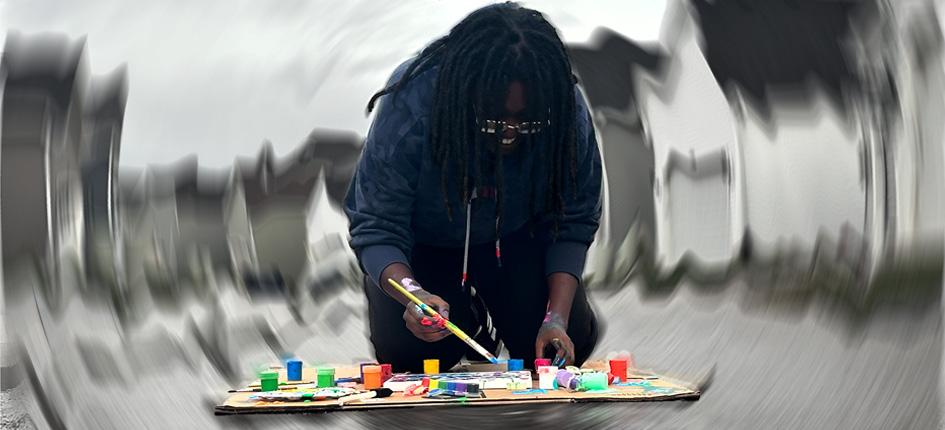
Forging your own path
We are all inspired by someone, whether that is our favorite celebrity or a member of our family. Admiring someone can push us to our limits; they can make us better writers, faster runners or maybe kinder people. However, when admiration bleeds into obsession, we may lose sight of who we truly are and what makes us unique.
be fun to match with your best friends and peers, and there is nothing wrong with being influenced, but differentiating yourself from others is important. Trying things that may scare us initially can often lead us to grow and discover new parts of ourselves. The things that set us apart from others are what make our lives our own.

Kaneland
47W326 Keslinger Rd. Maple Park, IL 60151 (630) 365-5100 www.kanelandkrier.com
for Best Overall Publication 2021 - 2024 Subscription rates: Five issues, three supplements School-delivered, $25; Home-delivered, $35
EXECUTIVE STAFF
Schroll
News 1 Aleena Alrifaee
EDITORIAL STAFF
News Spread Anna Gatz and Ellie Olp

Whether we realize it or not, the idea of blending in is the driving force behind many of the decisions we make throughout high school, and even throughout our whole lives. No one wants to be known for the wrong reasons, and this fear limits us and prevents us from going out of the box or trying something new. Acting a certain way because it is what we think we are supposed to do based on external pressures, though, stops us from discovering what we believe, the things we like and who we truly are.
It would be one boring world if everyone did what the majority did. Although we have all been told the same cliche time and time again to just “be ourselves,” this is a vital piece of advice. Without a variation of ideas, personalities and interests, innovation would cease to exist. Uniqueness and individuality are what create and advance the world as we know it, and it is often the smallest differences that create the largest changes.
You have probably bought a shirt because you saw someone else wearing it on TikTok, or started listening to a song after you heard your friend play it in the car. It is safe and comfortable to try something that we already know works or are confident we will like. It may

One of the most central parts to what makes up who we are is what we value. Simply following what others believe, whether that is our parents, our friends or what we see online, is dangerous. It can cause us to lead lives and make decisions that aren’t true to who we are. We must decide for ourselves, with our own research and reflection on life experiences, what we personally value. No one benefits from a lack of individuality in the world. There is a choice we all make at various points in our lives about who we want to be. Whether or not we decide to make our own path determines how we benefit or do not benefit our world.
Staying genuine to ourselves is easier said than done. It is no easy feat to be unapologetically yourself, especially at a time where it feels like we are constantly being judged. But it is vital to ourselves and to the world nonetheless. We may stumble and lose track of our values from time to time, but all that matters is that we all keep trying our best.
There is only one lifetime that each of us gets. There is no reason to waste that precious time pretending to be like everyone else, so don’t. Be inspired and learn from others, but live your life the way you want to, not the way an influencer or a peer may live theirs.
Sports & Activities 1 Audrey Noring
Feature 2 Grace Brunscheen
Advice Prema Weichun
Editorial Sophia Schroll Feature 1 Kate Homco Opinion 1 Gavin Vaughn Centerspread Ally Reilley
STAFF
Giovanni Gino Bartolone, Jack Bicker, Jazmin Bosque, Ethan Butler, Kelyn Christiansen, Brooklyn Converse, Ava Corbett, Yahaira Delgado, Joe DiGuglielmo, Rowan Eubanks, Liam Flesher, Gabby Gutierrez, Raquel Hayes, Gianna Hough, Rebecca Johnson, Caden Kaiser, Devin Kapadia, Narmeen Kattoum, Casey Krohn, Chloe Larrison, Maley Love, Kaiden Lycan, Jay Maisonet, Carter Miller, Danika Null, Marissa Olson, Joe Placzek, Ciara Puett, Charlotte Rodts, Grace Rusev, Natalie Sanagustin, Logan Schroll, Miles Sizemore, Michael Spallasso, Alex Tobin, Veronica Van Dusen, Z.A.B, Mabel Zielke, Avery Zwick
ADVISORS Print Production

Nicole Larsen Print advisor Dominic Bruno Krier advisor
EDITORIAL POLICY
Editorials represent a majority opinion of the Editorial Board and are not necessarily the opinion of Kaneland administration, staff, students or parents. The Krier Editorial Board consists of designated Advanced Journalism students: Aleena Alrifaee, Grace Brunscheen, Olivia Cotter, Ollie Fair, Anna Gatz, Kate Homco, Olivia Krasuski, Charlize Landa, Bobby Leavey, Faith Maschman, Audrey Noring, Ellie Olp, Morgan Olson, Ally Reilly, Ansley Ruh, Savana Sanchez, Clara Saros, Sophia Schroll, Hadley Springer, Gavin Vaughn, Prema Weichun, Emma Weintraub, Evan Whildin, and Noah Witz. Students make all publication decisions.
Letters can be sent to the address above or e-mailed to krier@ kaneland.org. Letters must be signed (names may be withheld under extraordinary circumstances as deemed necessary by the editorial staff) and must be under 300 words. The Editorial Board has the right to work with writers to edit for clarity and length. Any material that is potentially libelous, obscene or disruptive will not be published at the discretion of the Editorial Board. All decisions to publish or not publish letters are made by executive editors. The Krier has been an open forum since 1974. As an open forum, we restrict editing to staff members only; prior review and editing are prohibited by people outside the staff.
Controversies surrounding First Amendment
The line between regulation and restriction on freedom of speech
BY CLARA SAROS & GAVIN VAUGHN Column Manager, Editor and Broadcaster
One of the most popular constitutional amendments is unsurprisingly the first one. As it appears in the Constitution, it states, “Congress shall make no law respecting an establishment of religion, or prohibiting the free exercise thereof; or abridging the freedom of speech, or of the press; or the right of the people peaceably to assemble, and to petition the Government for a redress of grievances.”
The amendment protecting our freedom of speech and expression has shaped our country and culture. The ability to state our opinions, even if they are unpopular, as loudly as we like without fear of oppression is a privilege not every country affords its citizens. It is especially important that this freedom is protected, as speaking out freely has led to major societal reform.
However, just because the Constitution grants freedom of speech does not mean we should say whatever we want all the time. In order to maintain healthy relationships with others, we must respect the people around us. Respecting someone’s beliefs does not mean giving in and disregarding your beliefs and opinions, but realizing that theirs are valid too.
them well.
“Nowadays, the first thing people do is they go to Google, and they’re going to look you up if you’re interviewing for a job there,” Markovich said.
If you choose to harass people, shoot down their opinions or generally disrespect them with your right to free speech, you must be ready to accept the consequences. Although it is not a law, the way you choose to use your freedom of speech will affect your life and the people around you.
With that being said, free speech is a right, but like most rights, it comes with some responsibilities. The question
have, but it doesn’t mean our words are more important than those from an opposing group. When you speak your mind, you open the door for others to respond. Opposing opinions are not an attack on your freedom; they are simply examples of an opponent’s freedom of speech being exercised as well. If only one side gets to speak without pushback, then real dialogue and conversations can’t take place.

Similarly, one should not persistently say things that are rude or offensive to others. If someone is harassing another person in any form, their words are no longer free speech but hate speech. Whether it occurs to their face, behind their back or on social media, words can hurt people.
“Social media almost has a boomerang effect,” guidance counselor John Markovich said. “You send it out into the world, and it keeps coming back to you.”
Not only could social media misuse affect people around you, but it could also affect your future. Colleges and potential employers will look at your digital footprint to make sure you will be a good fit at their school and represent
of whether or not our freedom of speech should or shouldn’t be regulated is a heavily debated topic these days. On one hand, completely unrestricted freedom of speech could allow for threats, harassment or dangerous misinformation that may harm others. On the other hand, regulating speech risks silencing voices and opinions that deserve to be heard by others. The balance lies in protecting people from direct harm while still allowing room for debate and discussion. Free speech should be safeguarded, and any regulation must be explained carefully and be well-defined. Additionally, our free will to speak is one of the most exercised rights we
Additionally, the internet has made sharing one’s opinions easier than ever, but it has also made those opinions permanent. According to Teen Vogue, “A survey found that 45% of teens report being online nearly constantly.” This means that once you post your feelings, whether that is in the form of a joke, a rant or a serious statement, the post becomes part of your digital footprint. This is especially serious because teenage brains aren’t fully developed and won’t be until you reach your mid-20’s. Even if you delete a post shortly after sending it, screenshots and archives make it nearly impossible to erase that evidence. This means that your words can follow you into school, jobs and life in general.
Once you start to limit free speech, it becomes difficult to know where the line gets drawn and who decides to draw it. At first, it might seem reasonable for someone to limit what you say, but over time, those restrictions can grow until just about everything can be labeled as “too offensive” or “too dangerous.”
Free speech works best when people can openly express themselves, even if their views are unpopular, because it allows for debate and society to grow. If voices begin to get cut off arbitrarily or without concrete reasons, then risks begin to develop, creating a slippery slope where freedom is slowly chipped away.
Drowning in our desires
BY AUDREY NORING & ANSLEY RUH Editors, Social Media Assistant and Podcaster
Members of Gen Z consume at an unsustainable rate: makeup, technology, clothing and every other item imaginable. We, as Gen Zs, are constantly fed lies that we need to buy things. “You need to get your hands on this Amazon dupe!” Lies. “These are the best shoes you’ll ever have!” Lies. “Top 10 cheap closet staples!” Lies, lies and even more lies. In this day and age, we are taught we need everything, from a two dollar shirt from Shein to the new Apple iPhone 17. Consumerism has gotten out of control. Have free time? Shop. Spending time with friends? Shop. Sad? Shop. Happy? Shop. Shopping must be the answer to everything, right?
According to Earth.org, of the 100 billion garments produced each year, 90 million tons end up in landfills. If this trend continues, the number of fast fashion waste will soar to 134 million tons a year by the end of the decade. Although a person must spend their own money on items, the planet is paying for their shopping sprees. Factories that pump out cheap fuel lead to pollution in our air and waterways. Every impulse buy leaves behind a trail of toxic dyes and gases.
Senior Olivia Olson knows impulsive and excessive buying all too well. Working at Plato’s Closet, she has seen the clothing waste firsthand.
“People end up buying clothes they don’t even wear just to throw them away,” Olson said. “That goes right into our landfills, which leads to a ton of waste that will ruin our earth.”
money.”
Another mental toll is the pressure to always keep up. You just bought a new Stanley, just for the Owala water bottle to be the next trend shortly after. The only answer is to buy the Owala to keep up with the trend, right? Now the Stanley sits collecting dust with the barely used Hydroflasks, Yetis, CamelBaks and Gatorade Squeeze bottles, just to be hitting the shelves of Goodwill not too long after. Keeping up can be exhausting, leaving people in a never-ending loop of chasing the next trend.
The feeling of purchasing an item one may deem as a necessity to maintain their appearance is real as well.
“You have to uphold a new standard when it comes to buying new clothes,” Humay said.
The reality is that things will go out of style, and then you will probably no longer use or want those items.
“I have bought some things because I thought they looked cool,” junior Jackson Valentini said. “I thought that if I bought it, I would be a cooler person. But that’s just not true.”
One way to help the issue of consumerism is thrifting. Thrifting involves reusing and recycling items
nsumerismaproblem in the UnitedStates?
The mental toll is just as real. Constant ads and endless hauls on social media train our brains to crave the next purchase. It is a cycle of scrolling, spending and scrolling once again. The problem is, the high never lasts. The short-term high is unmatched when compared with the long-term emptiness. Instead of making someone happier, the cycle leads to dissatisfaction.
“Shopping takes a toll on people mentally,” junior Cason Humay said. “I mean, they are spending a lot of
that are no longer needed. Rather than going out and buying new things, Humay, Valentini and junior Griffin Seaton enjoy going to the Goodwill bins every Sunday.
“When you find a good piece [while thrifting], you get that rush of dopamine,” Seaton said. “Goodwill is good because it is a non-profit. We donate every time we buy.”
It is essential to move away from the wasteful tendency of purchasing items and barely using them in order to protect both your mental well-being and the environment. Instead of getting into the trap of constantly buying stuff, we should move toward a more circular model in which the materials that build the world are created to last longer and are easier to repair. Once these materials serve their purpose, they should be repurposed through reusing, recycling or composting in a sustainable way. Next time you’re tempted to buy something, ask yourself: Do I need this, or am I just feeding into the cycle?
Doyouoverconsume (food, clothesand
BY ALEENA ALRIFAEE & FAITH MASCHMAN Editor and Social Media Assistant and Review Manager
What conspiracy theory do you believe in?

“I think that the Illuminati is real.”
-senior Alex Christakes


“I think aliens are real. I mean, you know, it’s kind of hard to believe that, you know, outer space and like, we’re the only people, you know, living people on it in space. I just can’t get behind the idea that we’re the only one.”
-junior Jackson Slifka
“I think deja vu is way more than we think it is. I think it is memories from our past lives.”
-junior Isabel Estrada



“I firmly believe that aliens are completely real. Since the universe is so big, I think there has to be some other place out there that is suitable for life. I think we’re just not looking in the right places. ”
-sophomore Mateo Steuer
“I believe in ghosts because I feel like there are things in my house that move or do something weird, and I just feel like it’s a ghost.”
-freshman Addison Vonk
“I believe that the moon landing was fake.”
-senior Emma Johnson





Find all the hidden words in the puzzle! Words may be placed horizontally, vertically or diagonally, and they can appear forwards or backwards Circle each word as you find it , and try to locate them all. Good luck, and have fun searching!
Consumerism
Game
Individuality
School
College
Freedom











SLICK CITY ACTION PARK





















“If you fall down this rabbit hole of being hyperfixated, you won’t really enjoy things.” - guidance counselor Cynthia Violett (page 13)

